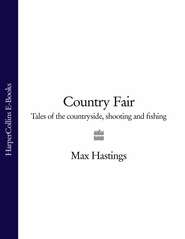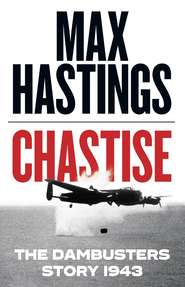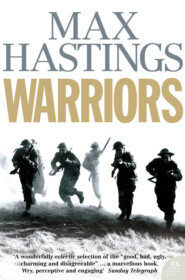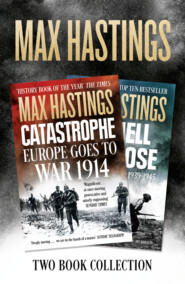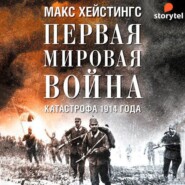По всем вопросам обращайтесь на: info@litportal.ru
(©) 2003-2024.
✖
Vietnam: An Epic History of a Divisive War 1945-1975
Настройки чтения
Размер шрифта
Высота строк
Поля
Doug Ramsey at his 1973 release after seven years in Vietcong hands. (#litres_trial_promo)(Courtesy of Doug Ramsey)
Fugitives during the April 1975 collapse of the South Vietnamese army. (#litres_trial_promo)(Anonymous/AP/REX/Shutterstock)
ARVN defenders of Saigon, 1975. (#litres_trial_promo)(Bettmann/Getty Images)
North Vietnamese troops approach Saigon. (#litres_trial_promo)(Hervé GLOAGUEN/Getty Images)
ARVN captives attend a reindoctrination session. (#litres_trial_promo)(© Marc Riboud/Magnum Photos)
Boat people. (#litres_trial_promo)(Courtesy National Archives, photo no. 428-N-1175389)
Every effort has been made to trace copyright holders and to obtain their permission for the use of copyright material. The publisher apologises for any errors or omissions in the above list and would be grateful if notified of any corrections that should be incorporated in future editions of this book.
Maps (#u736fbc1c-9c92-5aad-b53b-0259705d8530)
French Indochina (#ulink_391e0515-760d-5d8e-9ed3-fd4f5c5c7120)
Dienbienphu, 1954 (#ulink_109dc363-1a29-50e6-be45-7fef74b92758)
Partitioned Vietnam (#ulink_eb94c921-56e9-558f-aca7-140834ada472)
South Vietnam’s provinces and main towns (#ulink_24613d27-3f5f-588a-8bbd-eb672106a185)
The Ho Chi Minh Trail (#litres_trial_promo)
The Tet offensive, 1968 (#litres_trial_promo)
Hue (#litres_trial_promo)
Daido, 30 April–2 May 1968 (#litres_trial_promo)
Operation Linebacker, 1972 (#litres_trial_promo)
January 1973: rival areas of control (#litres_trial_promo)
The 1975 North Vietnamese offensive: main thrusts (#litres_trial_promo)
Epigraph (#u736fbc1c-9c92-5aad-b53b-0259705d8530)
‘Asia will have a long-deferred revenge on her arrogant younger sister’
Dean Inge, 1928
‘Every military fact is also a social and political fact’
Antonio Gramsci
‘Contains mature content strong language and graphic violence: Viewer discretion is advised’
Screen warning introducing the 2017 PBS Burns-Novick series The Vietnam War
(#u009794c4-434c-5956-8a65-22037eb804f5)
Introduction (#u736fbc1c-9c92-5aad-b53b-0259705d8530)
The struggle for Vietnam, a poor South-East Asian country the size of California, comprising mountains, jungles and paddies which enchant twenty-first-century tourists but were uncongenial to twentieth-century Western warriors, lasted three decades and cost between two and three million lives. In the eyes of the world, and even those of the communists’ Chinese and Soviet armourers, for the first twenty years it was a marginal affair. During its last phase, however, the war seized the imagination, roused the dismay and indeed revulsion of hundreds of millions of Western people, while destroying one US president and contributing to the downfall of a second. In the wave of youthful protest against authority which swept many countries in the 1960s, rejection of old sexual morality and an enthusiasm for the joys of marijuana and LSD became conflated with lunges against capitalism and imperialism, of which Vietnam appeared an exceptionally ugly manifestation. Moreover, many older Americans who lacked sympathy for any of those causes came to oppose the war because it was revealed as the fount of systematic deceits by their own government, and also seemed doomed to fail.
The 1975 fall of Saigon represented a humiliation for the planet’s most powerful nation: peasant revolutionaries had prevailed over American will, wealth and hardware. The silhouetted stairway up which on the evening of 29 April fugitives ascended to a helicopter, as if towards Calvary, secured a place among the symbolic images of that era. Vietnam exercised greater cultural influence upon its times than has any other conflict since 1945.
The merits of rival causes are never absolute. Even in the Second World War, the Western allied struggle against fascism was compromised by its reliance upon the tyranny of Stalin to pay most of the blood price for destroying the tyranny of Hitler. Only simpletons of the political right and left dare to suggest that in Vietnam either side possessed a monopoly of virtue. The authors of all the authoritative works about the conflict are American or French. More than a few of the former write as if it was their own nation’s story. Yet this was predominantly an Asian tragedy, upon which a US nightmare was overlaid: around forty Vietnamese perished for every American.
Although my narrative is chronological, I have not attempted to chronicle or even mention every action, but instead to capture the nature of Vietnam’s experience through three decades. As in all my books, while relating the political and strategic tale I also try to answer the question: ‘What was the war like?’ – for Northern sappers, Mekong delta peasants, Huey pilots from Peoria, grunts from Sioux Falls, air defence advisers from Leningrad, Chinese railway workers, bar girls in Saigon.
I was born in 1945. As a youthful correspondent, I lived for almost two years in America, and later repeatedly visited Indochina. My understanding was so meagre, my perceptions so callow, that in the text that follows I shall not allude to personal experiences, instead summarising them here. In 1967–68 I travelled widely in the US, first on a journalistic study fellowship and latterly as a reporter during the presidential election campaign. I had brief encounters with many of the major players, including Robert Kennedy, Richard Nixon, Eugene McCarthy, Barry Goldwater, Hubert Humphrey, Ronald Reagan … and Harrison Salisbury, Norman Mailer, Allen Ginsberg, Joan Baez.
In January 1968, I was among a group of foreign journalists who visited the White House. Seated in the cabinet room, we were harangued for forty minutes by President Lyndon Johnson about his commitment to Vietnam, weeks before he stunned the American people by announcing that he would not run for re-election. That morning his personality seemed no less formidable for being close to the caricature. ‘Some of you like blondes, some of you like redheads, and some of you maybe don’t like women at all,’ he declared in that deadweight drawl, gesticulating constantly to emphasise his points and making broad pencil strokes on a notepad before him. ‘I’m here to tell you what kind I like. I’m prepared to meet Ho Chi Minh any time in a nice hotel with nice food and we can sit down and talk to settle this thing.’
After making his pitch this big man left the room abruptly, without taking questions, merely loosing a Parthian shaft at anti-war columnist Walter Lippmann. We had risen and were gathering our notes, when suddenly the president put his head around the door again. ‘Now, before y’all go,’ he said almost coyly, ‘I want to ask: do any of you feel any different from anything you had read or heard about me before you came?’ We were stunned into inarticulacy by this glimpse of Johnson’s awesome vulnerability.
In 1970, I presented a series of reports for BBC TV’s 24 Hours programme from Cambodia and Vietnam, then returned in the following year to do more of the same, interviewing President Nguyen Van Thieu and also visiting Laos. Among other themes of those films, I accompanied men of the US 23rd Division on a sweep in the Hiep Duc valley, flew in a Vietnamese Skyraider on a strafing mission, and reported on the battle for Firebase 6 in the Central Highlands. Later that year, in Beijing’s Great Hall of the People I shook the hand of Zhou Enlai. In 1973 and 1974 I travelled again in Vietnam, and in 1975 reported the final campaigns, including the shambles of Danang just before its fall, later from around Saigon.
I intended to remain among the handful of correspondents covering the North Vietnamese takeover. On the afternoon of the final day, however, I lost my nerve, forced a path through the mob of terrified Vietnamese around the US embassy, and scrambled over its wall with some assistance from the Marine defenders. A few hours later I was evacuated in a Jolly Green Giant to the USS Midway.
The above episodes* (#ulink_4a061db5-51d2-55d0-af26-a52f4c28161b) yielded immature journalism, but today lend personal colouring to my descriptions below of the sweat-soaked, dust-clinging, bomb-happy ‘boondocks’, as Vietnamese, French and American fighters knew them. In later years I met Robert McNamara, Henry Kissinger and other giants of the Vietnam era. Arthur Schlesinger became a friend.
All wars are different, and yet the same. A myth has grown up, in the US at least, that Vietnam inflicted unique horrors on its participants, attested in countless veterans’ anguished gropings into poetry. Yet anyone who lived through Rome’s Carthaginian struggles, the Thirty Years War in Europe, Napoleon’s campaign in Russia or the 1916 Somme battles would mock the notion that Indochina offered qualitatively worse experiences. The violence that men inflicted with spears and swords, or unleashed on innocents in the path of armies, was as ghastly in the second century AD as in the twentieth. An attacker set afire by burning oil poured from the walls of a medieval city suffered as terribly as one who fell victim to napalm. Looting, rape, black markets, casual violence towards civilians and prisoners, are inseparable from all conflicts. The 1939–45 cities of Europe hosted as many girls for sale as later did Saigon – recall London’s ‘Piccadilly commandos’. In times gone by, however, little was said to folks back home about such sordid manifestations. Film footage authorised for public screening excluded images that were deemed demoralising, because explicit.
In the new revelatory mood of the 1960s, however, suddenly the world witnessed nightly on prime-time TV the excesses and uglinesses perpetrated by US and South Vietnamese forces. Among images that inflicted special injury upon American purposes were that of Saigon’s police chief shooting a Vietcong prisoner during the 1968 Tet offensive; and of a screaming child, running naked in her agony after falling victim to a 1972 napalm strike. Hanoi released no comparable snapshots of cadres executing indigenous opponents by burying them alive, nor of Vietcong being mown down in unsuccessful assaults. Instead, it broadcast only heroic narratives, together with heart-rending footage of devastation inflicted by capitalist air power. The visual contrast between the war-making of a superpower, deploying diabolical technology symbolised by the B-52 bomber, and that of peasants clad in coolie hats or pith helmets, relying for mobility upon sandals and bicycles, conferred a towering propaganda advantage on the communists. In the eyes of many young Western people, Ho Chi Minh’s ‘freedom fighters’ became imbued with a romantic glow. It seems quite mistaken to suggest, as did some hawks fifty years ago, that the media lost the war for the United States. But TV and press coverage made it impossible for Westerners either to ignore the human cost or to deny the military blunderings.
Hours before I myself, aged twenty-four, flew to Saigon for the first time, I sought advice from Nicholas Tomalin, a British Sunday Times reporter. He gave me the address of the Indian bookshop on Tu-do Street which offered the best rate for changing dollars on the black market. Then he said, ‘Just remember – they lie, they lie, they lie.’ He meant the US command, of course, and he was right. Like many other Western writers then and since, however, Nick ignored the important point that Hanoi did the same. This does not render acceptable the deceits perpetrated by MACV (Military Assistance Command Vietnam) and JUSPAO (Joint US Public Affairs Office), but it provides a context often absent from judgements upon the so-called ‘credibility gap’.
Moreover, although American and South Vietnamese spokesmen peddled fantasies, MACV seldom barred reporters from getting out there and seeing for ourselves. In a fashion unmatched in any conflict before or since, free passage was accorded on fixed-wing aircraft and helicopters to journalists and photographers, many fiercely hostile to their carrier’s cause. Relative American openness, contrasted with the communist commitment to secrecy, in my view constitutes a claim upon a fragment of moral high ground. The egregious error committed by US statesmen and commanders was not that of lying to the world, but rather that of lying to themselves.
In modern Vietnam collectivist economic policies have been largely discarded, yet the legitimacy of its autocratic government derives solely from its victory in 1975. Thus, no stain is permitted to besmirch that narrative: few survivors feel able to speak freely about what took place. This opacity has been amazingly successful in defining the terms in which Western as well as Asian writers address the war. While it is unlikely that US archives still conceal important secrets, many must be locked in Hanoi’s files. Liberal America has adopted an almost masochistic attitude, which has distorted the historiography as surely as do jingoistic works by conservative revisionists. I recently asked one of the most celebrated correspondents of the war era, ‘If peace demonstrations had been permitted in Hanoi, how many people would have shown up?’ He replied unhesitatingly, ‘None. The North was 100 per cent behind the struggle.’
This seems heroically naïve: most normal human beings crave escape from an experience that is inflicting grief and hardship on themselves and loved ones. Many of those in the West who opposed the war made a well-founded assessment that the US was doing something unlikely to succeed, employing grievously haphazard violence. Some then went a step further, adopting a view that if their own nation had embraced a bad cause, the other side’s must be a good one. Yet the Hanoi politburo and National Liberation Front caused the South Vietnamese people merely to exchange oppression by warlords and landlords in favour of even harsher subjection to disciples of Stalin. Democracy allows voters to remove governments with which they are dissatisfied. Once communist rule has been established, however, no further open ballot is indulged, nor has been under Hanoi’s auspices since 1954.
In conducting its war effort, the Northern politburo enjoyed significant advantages. Its principals were content to pay an awesome price in human life, secure from media or electoral embarrassments. They could suffer repeated failures on the battlefield without risking absolute defeat, because the US had set its face against invading the North. By contrast, when the South lost once, its fate was irreversible. There are significant parallels between the Vietnamese communists’ struggle and the Soviet Union’s 1941–45 war effort: Stalin yoked patriotism, ideology and compulsion in just the fashion emulated by Ho Chi Minh and Le Duan a generation later. Beyond peradventure the communists proved more effective warriors than the soldiers of Saigon, but it seems prudent to hesitate before anointing them the good guys in this saga.
Much of the narrative below depicts cruelties and follies, yet within the big canvas many individuals, Vietnamese and American, of all ages and both sexes, military and civilian, behaved decently. I have sought to tell stories of such people, because it is mistaken to allow virtuous endeavour to vanish into the cauldron of bomb blasts, brutalities and betrayals from which most accounts of the war are served up. I decided not to conduct primary political research: US archives have been trawled by scholars for decades; exhaustive accounts exist of the Western participants’ decision-making, notable among them those of Fredrik Logevall. Ken Hughes’ 2015 rendition and analysis of the White House tapes have established an almost incontrovertible record about the thinking and decision-making of Nixon and Kissinger that ended in the January 1973 Paris Accords, and supersedes much of the self-serving narrative presented in the participants’ memoirs. However, I have spent many hours studying testimony in the US Army’s Military Heritage and Education Center at Carlisle, Pa., and the US Marine Corps’ Archive at Quantico, Va. I have also accessed online material from Texas Tech University’s Vietnam War Study Center at Lubbock, and conducted almost a hundred interviews with survivors of all ages and both sexes, American and Vietnamese. Thanks to the indispensable aid of Merle Pribbenow, I have read many thousands of pages of translated Vietnamese memoirs, documents and histories.
Any historian such as myself, publishing a 2018 study of Vietnam, should acknowledge a debt to the recent Burns-Novick TV documentary series, which around the world has reawakened consciousness about this epochal struggle. I hope that my own work conveys something of the enormity of the experience the Vietnamese people endured over three generations, from the consequences of which they remain unliberated to this day.
MAX HASTINGS
Chilton Foliat, Berkshire, and Datai, Langkawi, Malaysia
May 2018







